虾笼植物每年都需要好好修剪
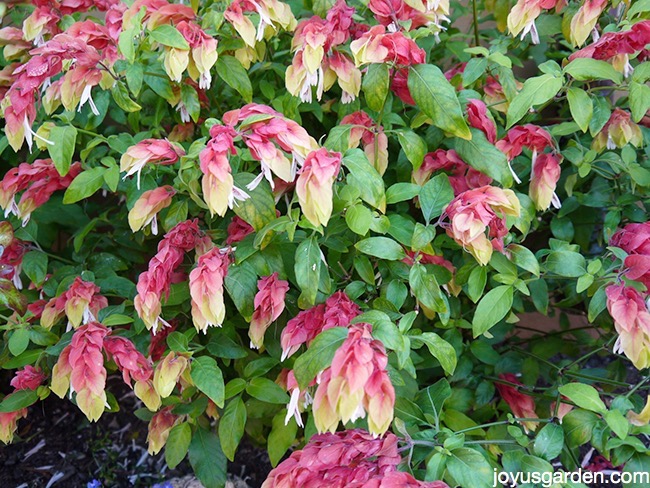

哦,是的,这种植物的名字非常贴切。 这种美丽的虾状花朵给花园增添了热带风情,在南加州,几乎一年四季都在疯狂绽放。 虾状植物需要每年修剪一次,以防它变得枝繁叶茂、杂乱无章,花朵比我们喜欢的要小得多。 我们要的是大虾花,而不是迷你虾!
虾笼草的植物学名称是 Justicia brandegeeana,它的生长速度非常快,我发现每年冬天对它进行一次严格的剪枝会让它受益匪浅。 在圣巴巴拉,如果冬天比较干燥和温暖,而它们又没有被剪掉的话,它们就会疯狂地开花,几乎不停地开花。 和其他疯狂开花的植物一样,它们也需要修剪来休息和恢复活力。开花毕竟是件辛苦的事。
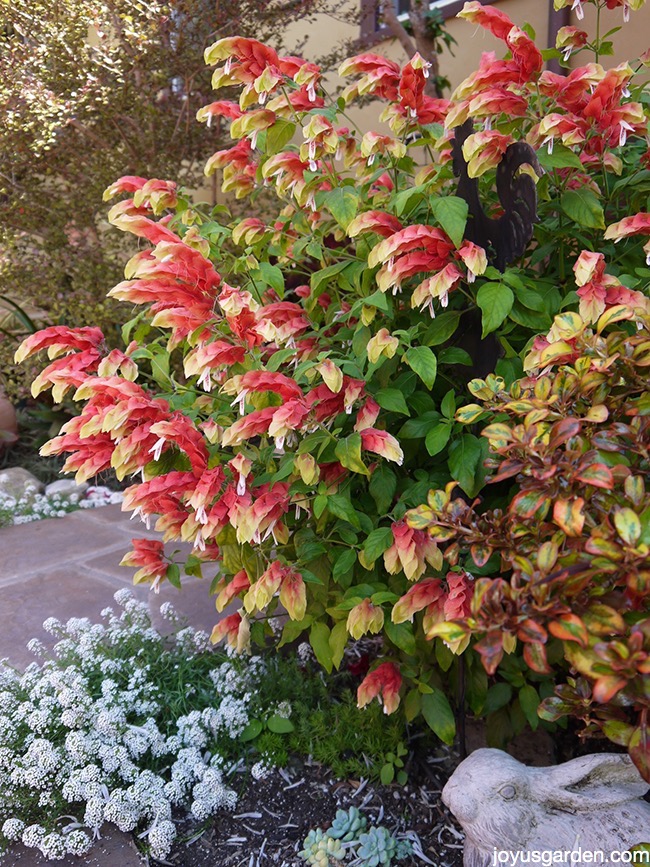 本指南
本指南 这张照片拍摄于 7 月,正如你所看到的,植物上开满了花。
我看到虾笼草被归类为常绿亚灌木或多年生常绿灌木。 无论你选择哪种分类,如果不修剪,它都会变得非常稀疏,至少在这里是这样。 树叶变黄,然后变黑,在凉爽的天气里脱落,使它变得更加稀疏。 尽管当我把它全部剪掉时,它完全光秃秃的,看起来非常难看,但为了得到所有的叶子,还是非常值得的。在我看来,这是个简单的选择。
我的虾苗需要好好修剪一下。 我花了 3 个月的时间才完成这段视频,所以你会看到一些服装上的变化:
修剪虾笼草其实不需要什么艺术技巧。 你可以使用树篱剪,这样植物就会很好。 如果我有一个虾笼草树篱,我就会这么做,因为按照我在视频中的方法修剪实在是太繁琐了,除非你喜欢这样做。 这种方法也适用于其他需要用力修剪的快速生长的多年生植物。在赛季结束时。
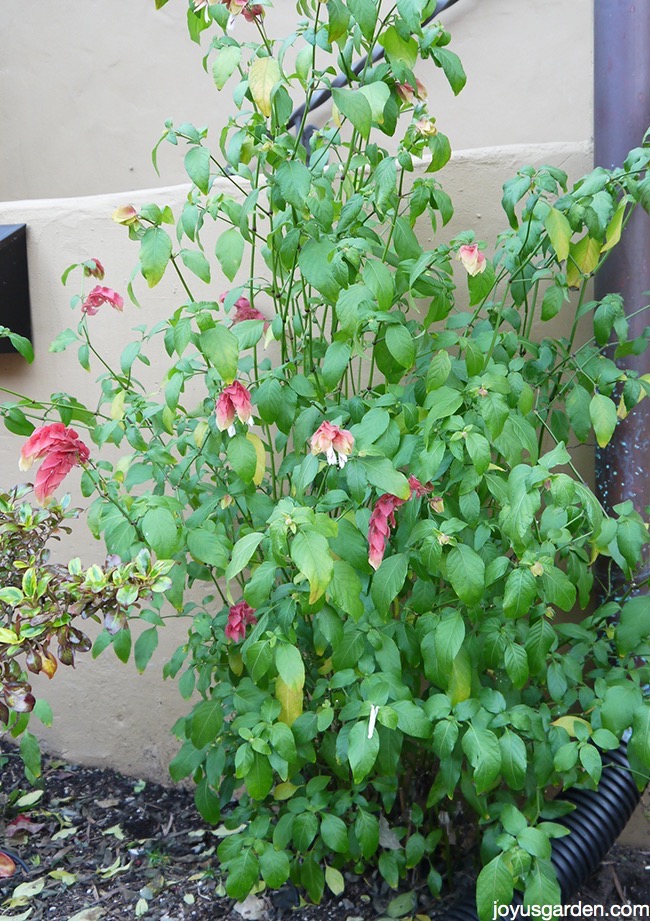
这是 1 月初的植株,您可以看到,它腿脚不便,花朵越来越小,越来越稀疏,叶子变黄并脱落。 在温度较低时,叶子会掉落,最终变黑。
修剪它们非常简单,我是这么做的:
1- 我从外向内修剪;首先将茎的外围修剪到土壤上方 2-3 英寸处。
2- 然后,我把每一 "行 "的茎都留到植株的中心,让它比前一 "行 "的茎高一些。 中心的茎留得最高,因为这样看起来最好&,这也是植物自然生长的方式。
See_also: 修剪多年生莎草3- 我把过细的茎或虬曲的茎切除,这样植物的形态会更好。 我把所有的切口都略高于生长节。
除了每年冬天进行的大修剪外,一年四季几乎不需要修剪。 如果有花茎开始遮住邮箱、突出到人行道上,或者我想修剪一下枯枝,我就会偶尔修剪一下。 我发现花朵会自行脱落,而且无论我修剪与否,它们都会像野火一样绽放。
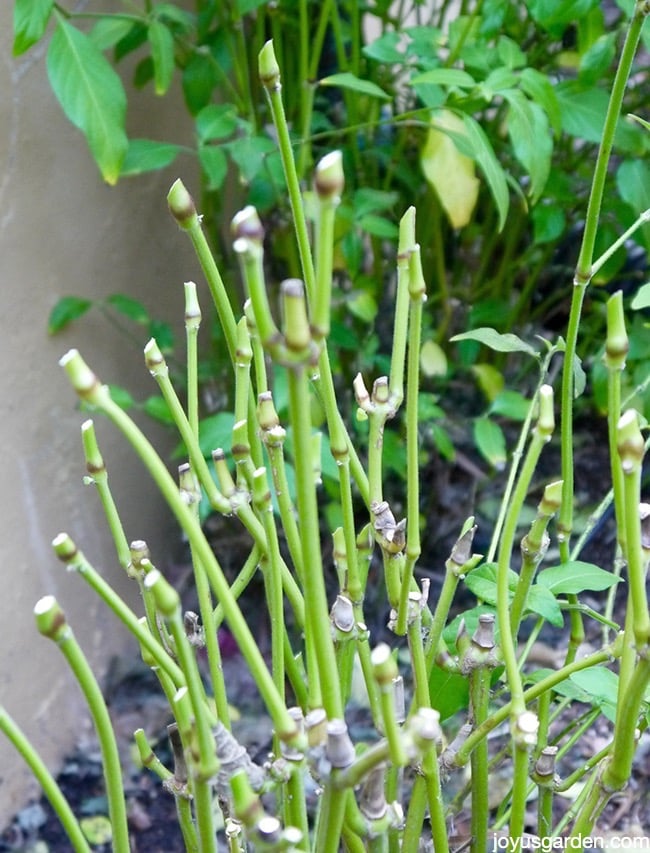
你还可以看到我是如何修剪茎干的,将中间的茎干留到最高。
See_also: 绣球花修剪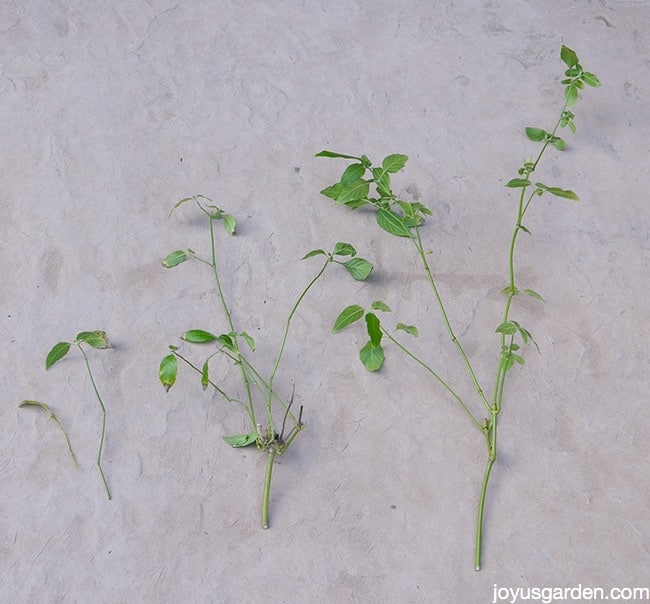
这不是最漂亮的照片,但这是我完全修剪掉的茎的例子。
蜂鸟非常喜欢这种植物。 几乎每个来我家的人都会在这种植物开花时对它赞不绝口。 如你所见,花朵非常独特。 是的,它们看起来确实像虾!
剪枝愉快
您可能还会喜欢
我们喜欢用于容器园艺的玫瑰
户外马尾棕护理:问题解答
如何利用预算进行园艺
芦荟 10
种植阳台花园的最佳技巧
本文章可能包含联盟链接。 您可以在此阅读我们的政策。 您购买产品的成本不会增加,但 Joy Us garden 会收取少量佣金。 感谢您帮助我们传播信息 & 让世界变得更美丽!

